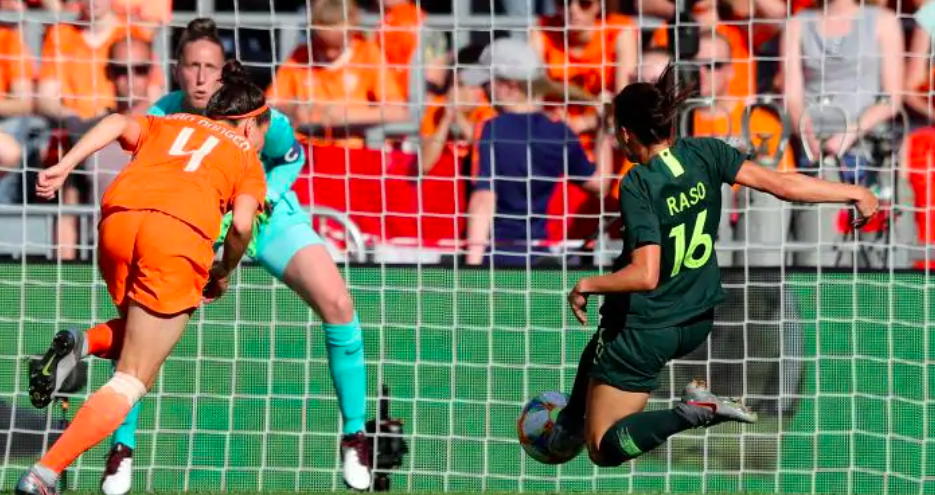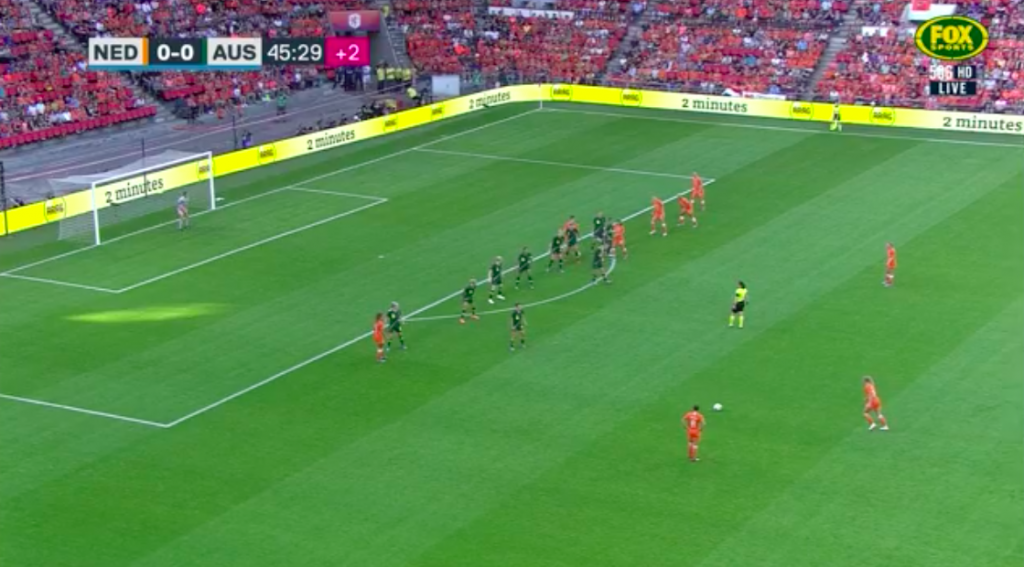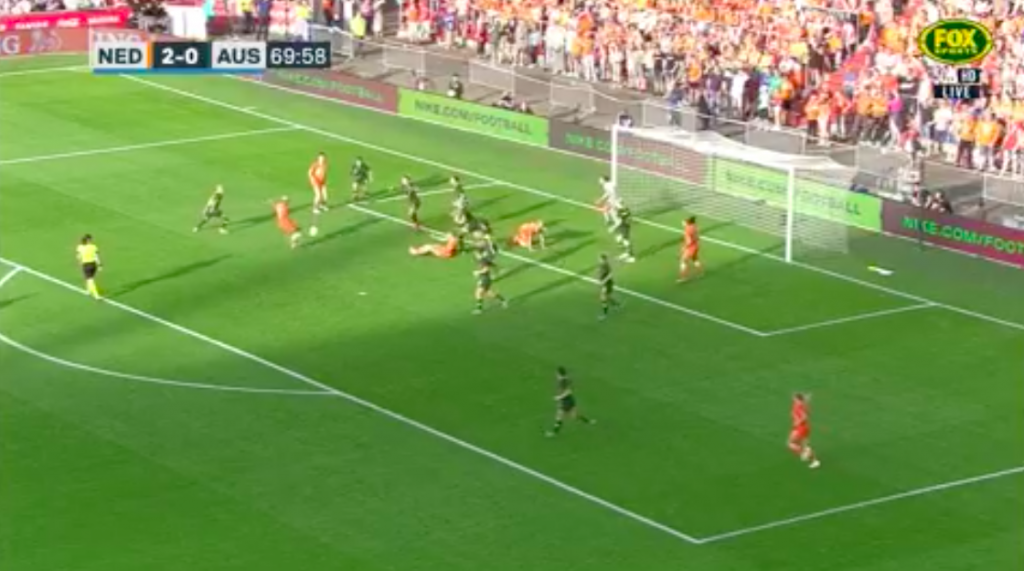
The Matildas went down 3-0 to reigning European champions the Netherlands in the early hours of Sunday morning in their last friendly hit-out before the 2019 FIFA Women’s World Cup kicks off on June 7.
Here are three things we learned from the match.
1. Set Piece Problems
Australia’s reputation as an attacking firepower is well-earned, but it can sometimes paper over some cracks down the other end of the park. Two of the Netherlands’ three goals this morning resulted from poor defending of set pieces; one from a free kick, the other from a corner. The first goal, just before half time, came from a free kick outside the box after a poor Sam Kerr challenge. As the players lined up across the 18-yard box ready for the in-swinging ball, the Matildas seemed to forget that four Dutch players were lined up behind them.

This may have been an anomaly; a breakdown in communication between goalkeeper Lydia Williams and her outfield players. After all, it’s Williams whose position allows her to see the entire field, and the Dutch aren’t exactly difficult to spot in those bright orange kits. Shanice van der Sanden, the right winger who had been causing Australia a lot of problems with her speed in behind the back line, raced into the open space at the back post and headed the perfectly-weighted free kick into the net.
Van der Sanden scored her second from another set piece in the second half—this time, from a corner that deflected into her path. While deflections can’t really be planned for, the fact that van der Sanden was left with enough time and space in the 18-yard box to set herself up for a volley—which she absolutely rifled into the roof of the net—is another question entirely.

In the post-game discussion, Georgia Yeoman-Dale summarised the problem: “We’re marking space, but space doesn’t score goals.” Zonal marking has its benefits, such as allowing for a quick transition when regaining the ball, but when key players are free in set piece situations, man-to-man marking should take priority.
2. The system is working, though!
Despite the scoreline, Australia actually played very well. Their high press regularly paid off; they created several opportunities in transition, particularly through stand-out Hayley Raso on the wing; they had majority of the possession and majority of the territory; they out-shot the Dutch 13 to 8 (including 6 on target to Netherlands’ 4); and they won 10 corners to the Netherlands’ 3.
This is a performance that head coach Ante Milicic can look to as an example of his progress with the squad. The Matildas held and recycled the ball with confidence and were rarely without supporting players around them. They created passing phases that felt much more purposeful than in years’ past, and were more patient in their build-ups, particularly in the second half.
This was especially encouraging given the number of players who were out of position; with the absence of holding midfielder Elise Kellond-Knight, playmaker Emily Van Egmond had to slot back into that more defensively-minded number 6 role. That meant that usual winger Caitlin Foord moved into the central number 10, while central midfielder Chloe Logarzo was used on the left wing. With Foord marked almost entirely out of the game and Logarzo largely absent down the left, the Matildas still managed to create several dangerous opportunities that a less talented goalkeeper perhaps would not have covered quite as well as Arsenal shot-stopper van Veenendaal did. You can see the direction that Milicic is taking this team; we can only hope that things start ticking over a bit more smoothly next week.
3. Sam Kerr is our main weapon – we just need to use her properly.
Sam Kerr is one of the greatest out-and-out centre-forwards in a generation of Australian players, not only because she’s absolutely deadly in front of goal, but because she can seemingly do everything—she’s dangerous in the air, with her back to goal, as a play-maker, and with the ball at her feet.
The last point is particularly important here, because for large parts of the Netherlands game, this was something that Kerr was not afforded the opportunity to do. Hats off must go to the Dutch centre-backs who did well to pressure Kerr whenever the ball was near her, particularly the Wolfsburg-bound Dominique Bloodworth.
But one of the reasons Kerr was often marked out of the game was because the balls being fed to her were not the right ones; many were in the air, where she was beaten by the taller defenders on her back, or they were in behind the defenders, who were obviously prepared for such plays because, duh, she’s Sam Kerr, and that’s what she does. Kerr was also often a bounce or pivot player, bringing others like Foord and Raso into the attack—the consequence of which was taking Kerr out of it.
While all of these plays have merit, the moments where Kerr looked really dangerous was when the ball was played in to her feet and she was allowed to turn and run at the centre-backs. There were two particular transition phases in the second half where Kerr had dropped to gather the ball, turned, and began to dribble at speed down the central channel. She drew in defenders as easily as she wiggled and jinked past them; both times, she was deliberately tripped over, the Dutch earning two yellow cards in the process. While the tiredness of defenders undoubtedly played a role in this, we all know that this is the kind of thing Kerr is best at. The knock-on effect of such an approach is that, by drawing players to her like a magnet, she opens up space for other speedy players around her to exploit. It shouldn’t be a last-ditch, bomb-it-forward-to-Sam-and-hope tactic; it should be something the Matildas should look to incorporate more often into their attacking play.






